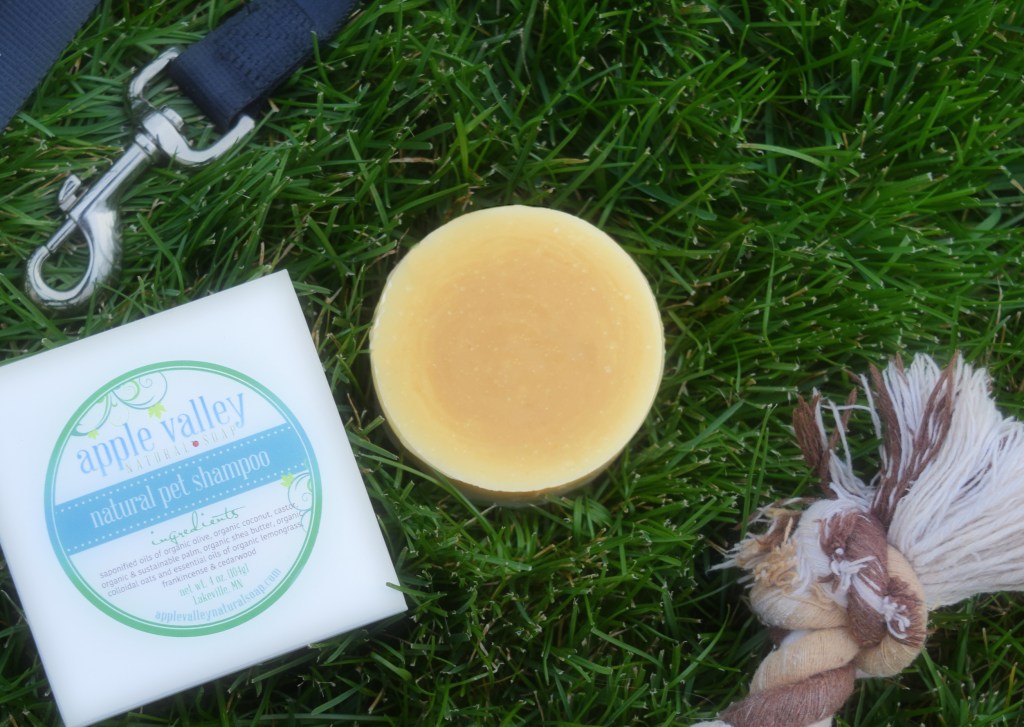Hello AVNS community! My name is Abigail Paige, and I’m a ballet dancer living in Washington D.C. I’ve been many places throughout my dance journey, but I was born and raised in Lakeville, Minnesota. Living naturally was a huge part of growing up, and a lot of those principles have stayed with me through the years. I am and have always been a huge animal lover, and am so blessed to have been able to find a job at a little pet store half a block’s walk from my apartment. The company’s focus is providing 100% natural pet food and products, so I really resonate with the objective and have learned so much in my time working there.
I remember the worst thing about getting sick when I was younger – essential oils had to be diffused in my room at night. This is by no means a bad thing, in fact it’s an incredibly effective solution, however it meant my beloved little dog Pippin wouldn’t be able to sleep in the room with me as he usually did. If essential oils are a large part of your daily lifestyle, you may have heard something similar to what my mom would tell me, that essential oils are toxic to pets. This is true in some cases, but fortunately for those of us who love both our furry friends and the benefits of essential oils, not always.
There are many factors that go into how safe it is to use essential oils around your pet. As we know, dogs and cats have extremely powerful noses, so keep in mind that a scent that is just barely perceptible to us may be incredibly strong and irritating to them. The type of oil being used largely varies the effect it will have on your pet. Some oils actually have calming or healing effects on pets, while others are highly toxic. It also depends on whether the oils are being used for topical treatment or being diffused in your home. Many oils, like tea tree, are beneficial when applied topically but harmful when inhaled or ingested by the animal.
Every pet will respond differently to various oils, so be sure to always monitor your pet’s outward signs while using essential oils in your home. Essential oils should be used with special caution around cats and flat-faced dog breeds, who are more prone to respiratory issues. If you have access to a vet, ask them about which specific essential oils are safe for your pet.
Which Oils Are Safe?
In general, the most important oils to avoid with all animals are high-phenol oils and those with high concentrations of pinene. These can cause liver toxicity, skin irritation, or respiratory issues for your pet. Some of the most common include:
- Oregano
- Wintergreen
- Clove
- Thyme
- Tea Tree
- Peppermint
- Ylang Ylang
- Cinnamon
- Citrus oils
- Cassia
- Nutmeg
- Mountain Savory
- Pine
- Spruce
- Eucalyptus
- Fir
Some essential oils that are generally safer to use around pets and may actually have some benefits are:
- Chamomile – calming, restful sleep, eases upset stomach
- Clary Sage – calming, anti-bacterial
- Sweet Marjoram – calming, inflammation, anti-bacterial, digestion
- Frankincense – calming, anti-bacterial
- Valerian – calming, restful sleep, skin soothing, digestion
- Ginger – joint pain, digestion, inflammation
- Cedarwood – insect repellent, calming, immune support, pain relief
- Lavender (AVOID with cats) – skin soothing, calming, insect repellent
- Helichrysum
- Rose
As may be obvious, there are a plethora of essential oils out on the market. It may be overwhelming to know that no “dos & don’ts” list is completely foolproof, but rest assured that the best person to ask regarding the safety of your pet is a licensed veterinarian. Some vets are even able to do blood tests to see if your pet will have an unusual reaction to a certain oil.
Topical vs. Diffusion
Topical application of certain essential oils can have many benefits for pets, and sometimes oils that you would otherwise avoid may be recommended for medical benefits for your pet. For example, tea tree oil is often used as a flea and tick repellent or hot spot relief. However, it is incredibly important when applying any oil to a pet’s fur or skin to remember to heavily dilute the oil with a carrier oil. This brings the strength of the oil down to a more manageable level for your pet and decreases the risk of any unwanted reactions. AVNS carries a high-quality virgin jojoba oil that works as a wonderful carrier oil for topical application. In addition, it also comes with its own benefits of soothing, conditioning and healing your pet’s skin and coat. Just be sure to order the unscented one when using on pets, so there are no unnecessary ingredients other than the intended oil being applied.

Young Living Essential Oils’ website recommends using a 9:1 ratio of carrier oil to essential oil for small dogs and cats, and a 4:1-3:1 ratio for medium and large dogs. It’s best to apply the oils by rubbing them together in your hands and stroking your pet gently. Be careful not to apply oils in an area where your pet could easily lick them off, as ingesting oils may seriously harm your pet. On their back or base of the neck is usually the best place to apply.
If you’re like me and love to use an essential oil diffuser in your home all day every day, you’re probably wondering how safe that is for your pet. Like topical application, there are ways to the reduce the chance of a negative reaction from your pet and help them stay feeling comfortable in their own home.
- Try to stick with pet-safe essential oils.
- Use less concentration than you normally would – only add 1-2 drops to your diffuser at a time.
- Don’t run the diffuser constantly, only for intermittent periods of time.
- Place the diffuser high up or in an area where it’s not dispensing directly near your pet or where your pet might be able to knock it over.
- Always be sure your pet has another area to go and leave the room that oils are being diffused in if they are uncomfortable or irritated by the scent.
- When using a new oil around a pet, do a test run of the diffuser for 10-15 minutes and closely monitor your pet’s reaction. Watch for scratching, excessive drooling/panting or sneezing, lethargy, redness around face, or vomiting. If all seems well, continue using it in short time periods while always keeping an eye out for any of the aforementioned symptoms.
Essential Oils in Pet Shampoo
Just as is with human beauty products, fragrances in pet shampoo can be a common irritant for many pets. Fortunately for us natural-conscious pet owners, AVNS has designed a pet-safe shampoo bar packed with priceless natural ingredients specifically for your furry friend! Olive, castor and coconut oils along with colloidal oats rejuvenate, soothe and moisturize any dry or irritated skin. Shea butter does the same while also conditioning your pet’s coat for a shiny, healthy finish. Last but not least, natural pet-safe essential oils of lemongrass, frankincense & cedarwood add their own healing, calming and insect repelling benefits. This bar is more than just a bath, it’s a smorgasbord of valuable and helpful ingredients to keep your pet happy, healthy and looking beautiful.

If you’re looking for a different scent or maybe even for something you might already have in your AVNS soap stockpile, check out all the other bars that are safe for use with pets:
- Simply Shea Shampoo Bar
- Jojoba Silk Conditioning Shampoo
- Lavender Silk Shampoo and Body Soap Bar
- Hemp & Honey Shampoo & Body Bar
Pets are an integral part of our home lives. Although the responsibility can be daunting, we take every effort to make sure they have the longest and happiest life possible. When we make the choice to “go natural” in our own lives, we do it because we care about what we put in our bodies. Our pets share a home with us, so why not use the same intention with them?
Until next time,
Abigail

